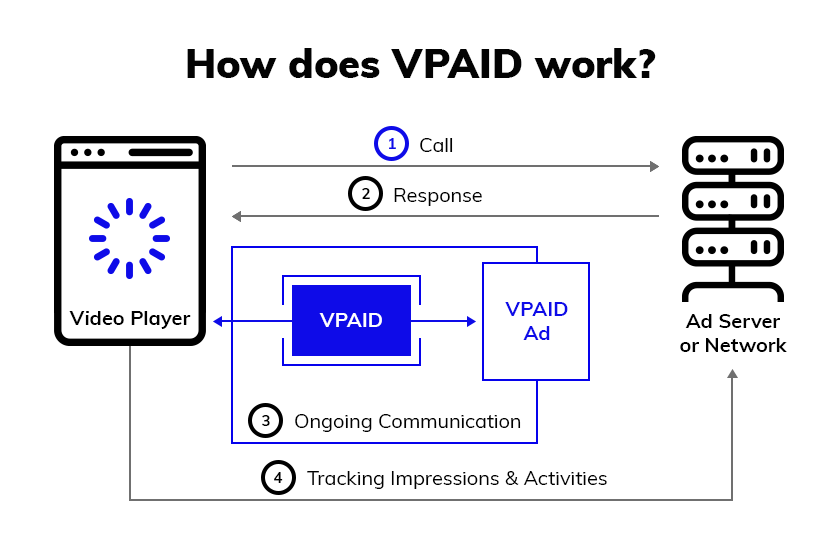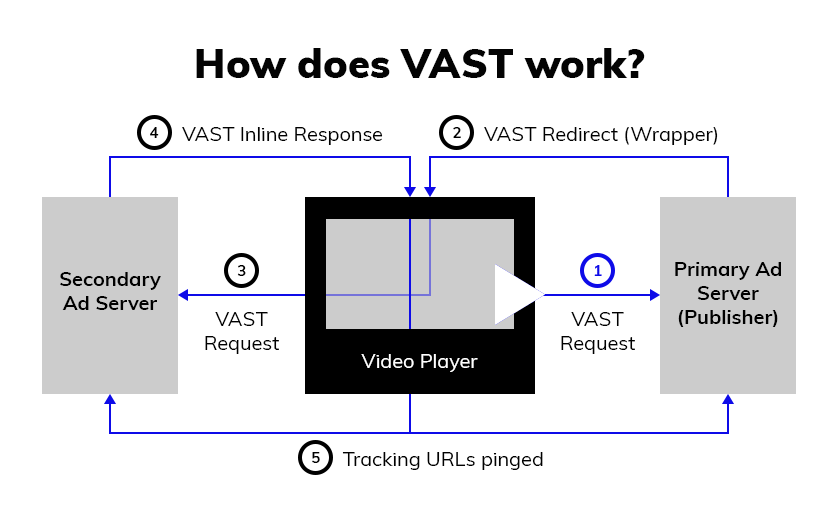
VAST vs VPAID: The Overview, Benefits, and Challenges
More than a decade ago, the way video ads were served used to be far more overwhelming than it is today. Particularly, matching each video player specs, ads had to be custom-produced, which required considerable investment in fine-tuning ads for each player.
In order to solve these problems, IAB rolled out the very first common Video Ad Serving Template – VAST. Over time, more standards, aimed to address the additional challenges of the video ad landscape, were implemented. In particular, VPAID, which we’ll explore in this article.
In just several years after their introduction, VAST and VPAID have been widely accepted in the industry. Although these two templates address different objectives, there’s still much controversy around the “VAST vs VPAID” distinction.
Let’s look at how to identify “VAST vs VPAID”, examine what purposes they serve, and which strengths and shortcomings they have.
What is VPAID?
VPAID is an abbreviation for Video Player-Ad Interface Definition. VPAID operates as a common interface that smooths the interaction between video players and ad units and delivers interactivity into the in-stream video ad experience.

VPAID Strengths
Apart from the interactivity mentioned above, VPAID offers a few more perks:
- Ad performance measurement
- Discovery and elimination of fraudulent activities
- Extensive monetization opportunities brought by a broader range of rich media ad formats.
VPAID Drawbacks
The interactive ad experience, being VPAID’s primary advantage, however, has its flip-side. Specifically, it can cause problems related to creatives and viewer experience, like ad latency or publisher security limitations.
To cope with VPAID security matters, IAB even had to release another standard, SIMID (Secure Interactive Media Interface Definition), aimed to protect publishers from data leakage and ensure asset transparency when it comes to interactive ads. Also, SIMID empowers interactivity support across mobile, SSAI, and CTV devices.
As for some other lapses, they are:
- Reduced website loading speed that leads to publishers’ revenue loss
- Irrelevant ad display caused by incorrect rendering of ad creatives
- Limited mobile inventory due to incompatibility issues.
What is VAST?
VAST stands for Video Ad Serving Template, designed to structure ad tags that serve ads to video players. At its core, it’s an approach to how ad servers interact with video players, without the need to customize ads for each of them. Hence, with this standard, advertisers can distribute their ads across the extended number of publishers more quickly and easily.

VAST Strengths
VAST advertising tag relieves everyone’s pains. Advertisers find VAST reliable and cost-savvy, while publishers acknowledge the template for its simplicity and monetization opportunities.
What other benefits does it bring in, especially from the publisher’s perspective?
- Scalability and opportunity to drive inventory sales
- SSAI support (Server-Side Ad Insertion) accompanied with broader device coverage, better viewer experience, and ad block resistance
- Maintaining сross-platform interactivity, like connected TVs and mobile.
VAST Drawbacks
Along with benefits, VAST may bring several challenges:
- Possible load-time latency as a result of serving ads through video players that can’t reproduce interactive components
- Disrupted viewing experience due to inconsistent usage of VAST creative identifier across different ad serving systems
As VAST keeps evolving with each new release, filling in gaps like measurement, addressing the need for interactive ads, and others, the difference between VAST and VPAID is gradually decreasing. Moreover, the current version of VAST provides more advancements.
Specifically, with VAST, publishers get more safety in terms of data and viewer experience than there used to be with VPAID. VPAID’s black-box nature comes from the lack of transparency on what’s behind the VPAID tag and its interactive code. VAST brings clarity here with its verified and well-marked code, plus awareness about creative asset sources. Besides, alternatively to VPAID, VAST provides better support for interactive ad experience across mobile and CTV.
Wrapping up
Understanding the strengths and areas where VAST and VPAID need improvement, is just the first step into a diverse landscape of video advertising and ad serving in particular. Next, it’s essential to stay compliant with either of the standards in order to bring a smooth experience to your viewers, help advertisers scale their campaign delivery, and increase your own revenue opportunities.
However, if you seek a better way to get transparency, safety, and ensure smooth video ad serving, especially across the CTV environment, VAST is probably the way to go. Learn more about how you can grow your business with easy VAST tag integration and other advantages provided by TheViewPoint.

